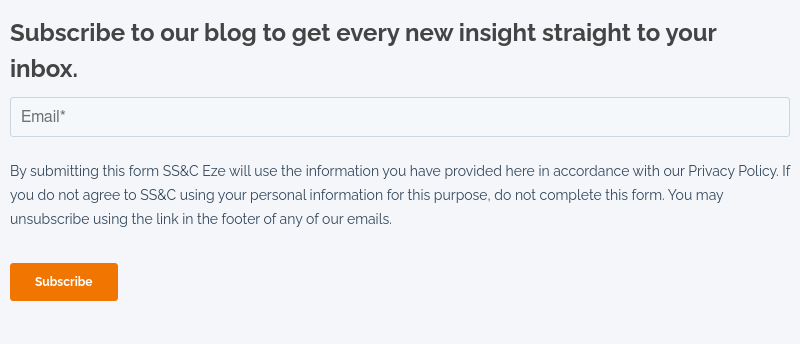Rising fee pressure, cost constraints, and investor scrutiny have led to increased focus on how resources and budgets are allocated within firms.
As a result, they are constantly looking to strike a better balance between cost, value, and need. However, when it comes to investment technology, it’s not always easy to determine the long-term total cost of ownership (TCO) or ongoing value and fit.
The lack of transparency around costs can be frustrating and confusing when you are in the process of or considering onboarding a new technology vendor. A good deal of this confusion comes from the fact that the price listed on a vendor’s proposal is often not the solution’s total cost of ownership. Buyer’s remorse is not uncommon when unexpected additional costs start creeping up and deviating from the budget expectations set based on the final proposal.
Looking Beyond the Proposal Price
Much of what is missing from the proposal vs. the solution’s TCO is “hidden fees,” costs not disclosed or discussed upfront. Regardless of intent or reason for non-disclosure, these “hidden” fees can have a significant impact on the total cost and your bottom line over time. On the opposite end of the spectrum, there are also “hidden values” that can have compound benefits over time to the firm without having a direct cost impact.
Both “hidden” fees and values need to be taken into account in order to accurately compare vendors and establish which solution provides the best value for your money.

The Framework: Calculating Total Cost of Ownership for Investment Management Technology
We’ve assembled a simple framework for calculating the total cost of ownership of an investment technology solution to help you uncover both the true total value and true total cost.
Basic Firm Requirements
“Basic Firm Requirements” are the baseline features and capabilities you expect from any investment technology provider on the market. This requirements list should be the minimum set of features that vendors have to include to accurately meet the basic needs of your firm.
Vendors that cannot satisfy these requirements should be ruled out at the top of the vendor selection process.
Basic investment technology solution requirements may include:
- Front-office capabilities
- Trading
- Realtime PL & exposure
- Allocation methodologies
- Back-office functionality
- Fund accounting and reporting
- Investor accounting services
- Reporting capabilities
- Compliance and functionality
- Open architecture for building out your investment ecosystem
- Flexibility and scalability
-
Hidden Fees
Items that are not initially apparent in a vendor’s pricing proposal but can and will add up over the lifetime of your technology solution are considered “hidden fees.”
Examples of Hidden Fees include:
- Maintenance and upgrade costs
- Market data fees
- Support and end-user training costs
- Infrastructure fees
- License fees
- Customization or integration costs
+
Hidden Values
A solution’s “hidden values” add value/efficiency either from the start or as your firm grows. These values are often overlooked when evaluating a solution’s TCO.
Examples of Hidden Values include:
- R&D commitments to continued product enhancements
- A service model large enough and scalable enough to fit the needs of your teams
- The breadth of offerings available to you as you scale, including managed services
- A platform approach that leverages technology and process best practices to provide maximum value
- Outsourced Trading Desk (OTD) integrations
- Stock Loan and Collateral Management
- Access to third-party apps and solutions
- Industry tenure and reputation
=
Investment Technology Total Cost of Ownership
By evaluating a solution’s TCO, rather than just comparing up-front costs, you can more accurately compare vendors and establish which solution/s will provide the most value to your firm over the long run.
More Breadth and Depth, Greater Value – Without the Inflated Price Tag
SS&C delivers more robust functionality at a greater value.
Every day at SS&C, we help firms assess their technology spending, better utilize their existing systems, and find more cost-effective options.
By working with one vendor for front-to-back technology applications, architecture, service, and a growing ecosystem of plug-and-play solutions, these firms save money on new features and tools with technology that adapts to their needs as they grow.
Instead of hidden fees, SS&C offers hidden values, like substantial commitments to R&D—$110M annually across SS&C wealth and investment technology offerings—a client-first service model and ease of scalability.
_crop_250x250.png)

